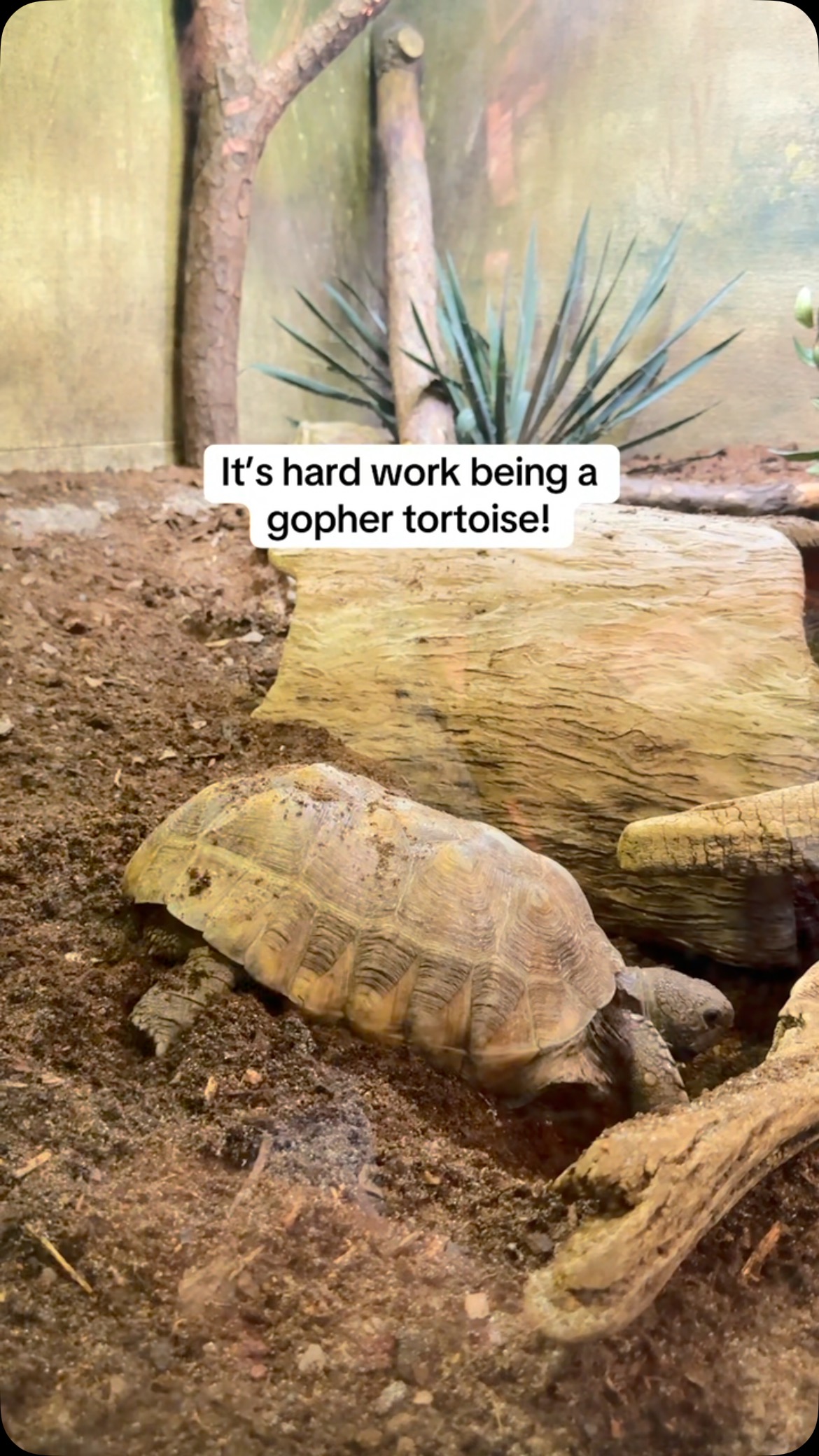- The ecological significance of gopher tortoise burrows and their impact on other species.
- Understanding gopher tortoises’ annual behavior patterns and their spring emergence.
- Conservation efforts and challenges in protecting gopher tortoises and their habitats.
- The role of zoological institutions like zoos in spreading awareness and fostering conservation.
- Practical steps individuals can take to contribute to the conservation of gopher tortoises.
Gopher tortoises play a pivotal role in their ecosystems through their remarkable digging activities. These animals, native to the southeastern United States, are not only integral members of their natural habitats but also vital contributors to the ecological balance. Their capacity to excavate extensive burrows provides shelter and refuge to hundreds of other species, earning them the designation of a keystone species. These habitual diggers construct burrows that can extend over six feet deep and 15 feet long, offering a stable home environment for a myriad of creatures. The stability and structure of these broad tunnels allow them to function as critical survival spaces for various animals, giving rise to a dynamic ecosystem beneath the surface. Essential factors in shielding multiple animals from external environmental conditions such as temperature extremes and predators, gopher tortoise burrows are ecological powerhouses.
The activities of gopher tortoises change throughout the year. Although they dig perpetually, there is a marked shift in their behavior with the arrival of spring. Warmer temperatures entice the tortoises out of their burrows more often to bask in the sunlight and forage for food. Their diet predominantly includes low-growing plants, such as grasses and legumes, but they also consume fruits, flowers, and seeds, playing a role in seed dispersion. The increase in above-ground activity is not just a seasonal nuance for these tortoises but also a trigger for greater interaction with other species and the environment.
Protecting gopher tortoises presents its unique challenges, primarily due to habitat loss and human activity. Historically, land conversion for agriculture, urban sprawl, and road development have encroached on their natural spaces, severely impacting population numbers. Conservationists focus on safeguarding these animals through habitat preservation efforts, which involve maintaining environments that support their natural behaviors and community roles. Legislative measures and wildlife management strategies also strive to curb the adverse effects of human expansion, ensuring the continuity of gopher tortoise populations. Monitoring and research play significant roles in these strategies, allowing for informed decisions and adaptive approaches to conservation.
Zoos have emerged as partners in these conservation efforts, offering education and awareness platforms, fostering understanding, and garnering public support for protecting gopher tortoises. By featuring these tortoises in dedicated exhibits, zoos can directly showcase the species’ behaviors and ecological importance. For instance, zoos like Rice Fields demonstrate these animals’ burrowing capabilities, such as Gerald, an exhibit tortoise, which helps visitors understand and appreciate the industrious nature of these creatures. Through interactive presentations and educational materials, zoos create engaging narratives that emphasize the necessity of preserving habitats and species, inspiring visitors to become more proactive in conservation.
There are several actions that individuals can take to aid in the conservation of gopher tortoises. Awareness and respect for their habitats are paramount; public education initiatives can sensitize people to the impacts of infringing on natural territories. Supporting landscape conservation programs, volunteering in habitat restoration projects, or donating to wildlife charities all contribute to the preservation of these habitats. Engaging in advocacy efforts by voicing support for environmental protections and responsible land use policies also plays a part in safeguarding the future of gopher tortoises. By taking active steps, individuals can be part of a collective effort to maintain these habitats and ensure the longevity of the species relying on the intricate network of life supported by gopher tortoises.
In essence, the intricacies of the gopher tortoise’s life reveal the complex and interconnected nature of ecosystems where they are found. Their role as ecosystem engineers, particularly during the vibrant activities of spring, underscores their ecological value. Through collective awareness, commitment, and action, the continuation and prosperity of gopher tortoise populations can be secured, thereby maintaining the richness and diversity of the environments they sustain.
*****
Source Description
“Spring cleaning” takes on a new meaning when it comes to gopher tortoises! ☀️ Known for their impressive digging practices, gopher tortoises create deep burrows year-round, but begin to emerge more frequently from these tunnels as temperatures warm back up. These burrows can be over 6 feet deep, meaning hundreds of other species also take advantage of these shelters!
Keep an eye out for our gopher tortoise, Gerald, hard at work on creating these burrows in the Rice Fields exhibit! 💪
.
.
.


